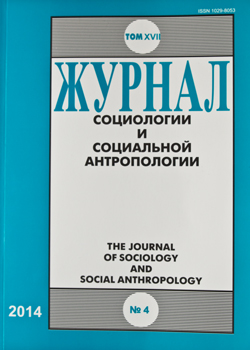Heterotopia of the City Picnic from the Perspective of Public Sphere Theory: a Cross-Disciplinary Case Study
Keywords:
city, heterotopia, public sphere, urban public space, public realm, private realm, parochial realm, non-place
Abstract
This paper continues the series of articles that presents the results of research on annual do-it-yourself urban public event called City Picnic, organized by the group of civic activists in Omsk. To hold this free open-air festival, they raise money through crowdfunding and commercial sponsorship, lease half-abandoned private recreation camp, and convert it into one-day public space with a full spectrum of urban entertainment, including concerts, performances, exhibitions, lectures and workshops, RRFM, pop-up cafes, children’s playgrounds, etc. What follows is a cross-disciplinary case study that explores City Picnic by means of Foucauldian heterotopology and public sphere theory. Interpreting data collected through discourse analysis, I draw on the work of Dehaene and De Cauter, who were the first to problematize heterotopia’s relation to the public and the private, and then examine City Picnic in a broader context of contemporary public sphere and urban public space scholarship. As a result, City Picnic turns out to be a semi-public, or ‘club’ space (whilst its coordinators assume and position City Picnic as a public space); a mixed space that includes public, private, and parochial realms (where the rise of the last two, accompanied with attendance increase and territorial sprawl, poses a threat to its publicness); a proto-political space (whilst one of its basic principles claims: ‘No politics’); and a practice of occupation of a non-place, or ‘transformer space’.
Published
2014-08-20
How to Cite
Kviat, A. (2014). Heterotopia of the City Picnic from the Perspective of Public Sphere Theory: a Cross-Disciplinary Case Study . ZHURNAL SOTSIOLOGII I SOTSIALNOY ANTROPOLOGII (The Journal of Sociology and Social Anthropology), 17(4), 136–149. Retrieved from http://jourssa.ru/jourssa/article/view/677
Section
Urban Sociology

